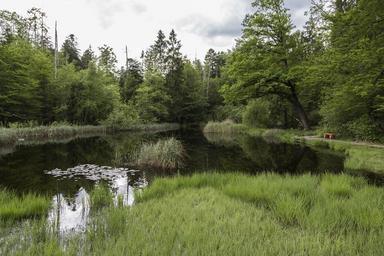Introduction
Art has a profound ability to evoke emotions and provoke thought. One of the most fascinating dimensions of art is its capacity to create contemplative spaces that invite introspection. These spaces can be physical or metaphorical, often captured through mediums like photography, painting, or sculpture. The essence of such environments lies in their ability to transport viewers into realms where they can explore their inner thoughts and feelings.
As we delve into the world of contemplative spaces, we will explore various artistic techniques that enhance introspection, from the use of murky tones in photography to the creation of shadowy reflections. Photography serves as an excellent medium for this exploration, offering a range of styles that engage viewers and facilitate deep reflection.

In this article, we will discuss how these themes manifest in photography and the broader art world. We will touch upon concepts like liminal worlds, tunnel vision, mood aesthetics, and much more, ultimately revealing how each element contributes to creating an environment ripe for contemplation.
Contemplative Spaces That Invite Introspection Through Art
Creating contemplative spaces requires intentionality and skill. Artists often utilize specific techniques to connect with their audience on deeper levels. In photography, this might involve capturing fleeting moments that evoke nostalgia or using atmospheric elements that envelop viewers in a particular mood.
The Role of Photography in Creating Contemplative Spaces
Photography serves as a bridge between reality and emotion, allowing artists to share their unique perspectives with viewers. When we consider the potential for self-portraiture in photography, it becomes clear how personal narratives can intertwine with universal themes of existence.
Liminal Worlds in Photography
A liminal world often exists at the intersection of two realms—the known and the unknown. Photographers harness this concept through imagery that embodies transitional spaces. Think about tunnel photography; these structures symbolize journeys yet to be taken or paths already traveled.
Defining Liminal Spaces
Liminal spaces are characterized by their ambiguity, often evoking feelings of uncertainty and curiosity. They challenge our perceptions and compel us to question what lies beyond the visible spectrum.

Examples of Liminal Worlds:
- Abandoned buildings Dark alleyways Empty parks at twilight
Tunnel Photography: A Journey Within
Tunnel photography exemplifies the notion of entering another realm—one where light fades into darkness or vice versa. This technique not only creates stunning visuals but also invites viewers into reflective states.
Elements of Tunnel Photography
Round Tunnels: Their circular forms suggest infinite possibilities. Backlit Subjects: These figures create dramatic contrasts against darker backgrounds. Wet Textures: The interplay between water droplets and light adds depth and dimension.Self-Portrait in Photography: A Reflective Practice
Self-portraits provide artists with an opportunity for existential reflection—capturing their identities through various lenses. By incorporating elements like dark walls or moody aesthetics, photographers can create an introspective atmosphere that resonates deeply with viewers.
Exploring Identity through Self-Portraiture
- Utilization of props (e.g., hats and coats) adds layers to personal narratives. Shadowy reflections emphasize internal struggles or conflicts.
Mood Aesthetics: Murky Tones vs Earthly Hues
The choice between murky tones and earthly hues plays a significant role in setting the emotional tone within any artwork. Darker palettes may evoke feelings of melancholy, while warm earthy tones can elicit comfort—both facilitating introspection.
Using Color for Emotional Impact
Murky Tones: Create an eerie stillness that prompts contemplation. Earthly Hues: Offer grounding sensations conducive to reflective practices.Exploring Atmospheric Elements in Art
Ethereal Atmospheres in Visual Storytelling
An ethereal atmosphere transforms ordinary scenes into something extraordinary—imbuing them with mystique that invites audiences into speculative thought processes.
Characteristics of Ethereal Atmospheres
- Soft lighting akin to fleeting moments during twilight. Incorporation of abstract forms that challenge perception.
Mystery in Photography: The Enigmatic Figure
Mystery captivates audiences; it encourages them to delve deeper into what they observe—often leading to personal interpretations grounded in individual experiences.
https://creativecatalyst468.bravesites.com/entries/general/-Thoughtful-Displays-of-Abstract-Portraits-to-Enhance-Living-Spaces-Creating Enigma Through Composition
Utilize shadowy figures positioned within compositions. Employ backlighting techniques which obscure details while highlighting form.Capturing Solitude through Urban Decay
Urban decay presents a compelling backdrop for contemplating life’s transient nature—a theme prevalent across various artistic expressions including photography.
Forgotten Spaces as Contemplative Environments
Abandoned factories or dilapidated homes serve as poignant reminders of what once was—evoking both nostalgia and reflection on loss over time.
Themes Explored within Urban Decay
- Time's passage as evidenced by aged surfaces Eerie stillness found amidst chaos
FAQ Section
1. What defines a contemplative space?
A contemplative space is any environment—physical or metaphorical—that encourages introspection and self-reflection through its aesthetic elements or emotional resonance.
2. How does tunnel photography enhance introspection?
Tunnel photography creates visual metaphors for journeys, prompting viewers to reflect on personal pathways through life while evoking curiosity about what lies ahead or behind them.
3. Why are murky tones effective in art?
Murky tones contribute a sense of mystery or melancholy which can resonate emotionally with audiences—inviting deeper engagement with the artwork itself.
4. Can urban decay be beautiful?
Absolutely! Urban decay often possesses haunting beauty; it encapsulates stories untold while showcasing nature's reclamation over manmade structures—a powerful narrative about change over time.
5. What role does color play in creating mood?
Color profoundly influences emotional responses; warmer hues typically evoke comfort while cooler shades may induce calmness—all fostering an atmosphere conducive to reflection.
6. Are self-portraits essential for artistic expression?
Self-portraits allow artists not just to explore identity but also connect more intimately with audiences—they reveal vulnerabilities which often resonate universally across diverse viewer experiences.
Conclusion
Creating contemplative spaces that invite introspection is both an art form and a practice rooted deeply within human experience itself. Whether through liminal worlds captured via tunnel photography, self-exploration expressed through emotive portraits, or urban decay reflecting life's impermanence—art continues to serve as a medium bridging our internal landscapes with external realities.
By embracing these unique facets within artistic expression—photographers facilitate profound encounters between themselves (the creators) and their audience(s), thus establishing lasting impressions ripe for contemplation long after viewing has ended.
This exploration showcases how various photographic techniques not only capture images but also evoke feelings deeply intertwined with our human condition—a reminder that every frame contains stories waiting patiently beneath surface appearances yearning for discovery amidst life's myriad transitions.